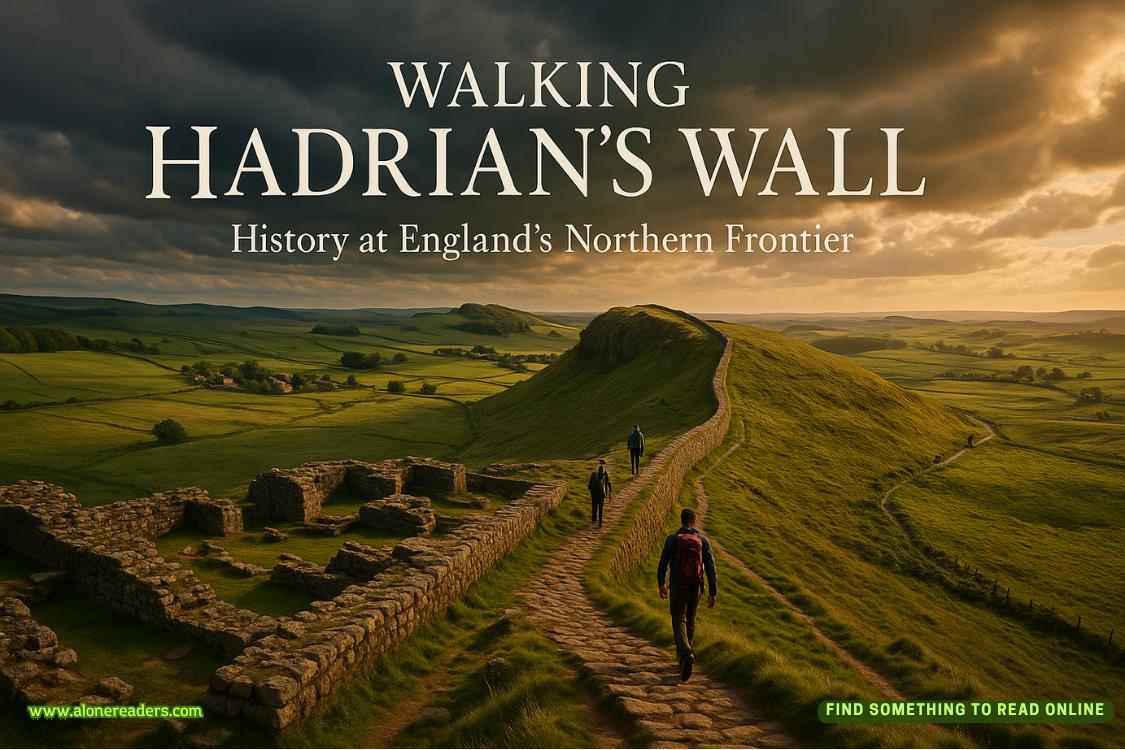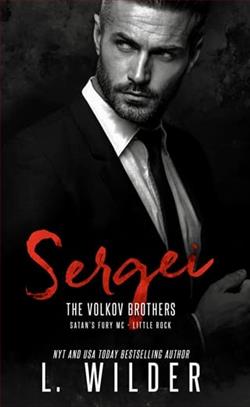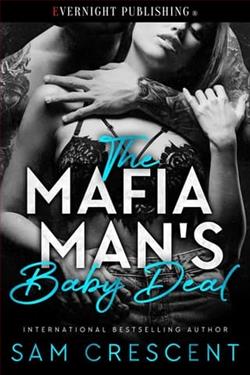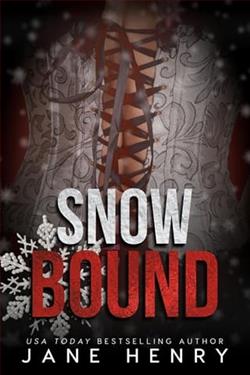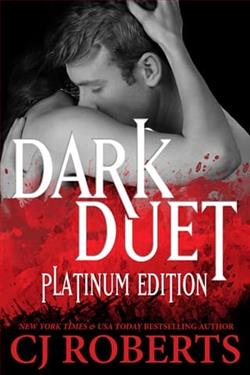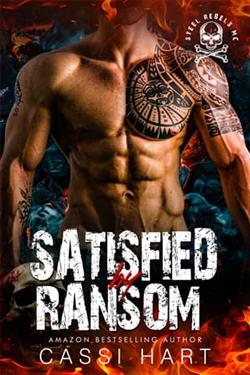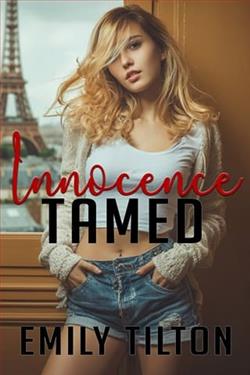Page 31 of The Christmas Retreat
‘I am really tired,’ I admitted, my exhaustion catching up with me again. ‘I want to hear Noel’s talk but then, if no one minds, I’m going to bed too, so I can look in just to say goodnight then, if you like, Cariad?’ I offered.
‘OK. Daddy, you bring her with you!’ she ordered as she left the room.
Arwen
Part of a letter from Arwen Madoc to Milly Vane, Sunday 1 June 1919
… and so, dearest Milly, off I went to breakfast yesterday, ready to cross swords with Mr Caradoc – only for him to take the wind out of my sails by saying that he was sure I would be eager to start work as soon as possible! Then right after breakfast, before Maudie and Bea had even appeared, he led the way down a long passage from the hall to a large studio, furnished with a model’s dais, easels, storage racks and all the other things you would expect – but also containing all manner of interesting objects, like African masks, an open trunk full of sumptuous material, a thronelike chair and various other things.
He told me his usual model, Effie Parker, is the companion of an artist called Gwendoline Sutler, who lives in Seren Bach, so that I will have frequent opportunities to draw from life. I was interested in finding another female artist living locally – but then he added that I need not become too friendly with the lady or her companion, since they led a very irregular life – and the same wentfor the other artists who resided all or part of the year in St Melangell, whom Maudie did not consider socially acceptable.
This sounded quite stuffily Victorian, and I was about to say so when he added, with one of his rare and quite charming smiles, that since I’d expressly said that I had no wish to spend my time socializing, but instead concentrate entirely on my work, he was sure I would obey him in this.
He had taken the wind out of my sails yet again. But secretly I hoped to find some congenial companions among the local artists and also, as he will find out, have no intention of obeying him in anything I do not agree with!
Anyway, he made me free of his studio and even offered to show me the nearby views and interesting spots in the landscape around the village after lunch that day. He could not do that straight away, for the housekeeper, Mrs Bradley, was waiting to show me over the house, after which he supposed I would like to unpack and settle in before lunch.
I think Mrs Bradley took me over every inch of the house, which is very large and rambling, including the attics.
It has been altered and extended over the years to include the studio, and also a small ballroom at the back with a roof terrace over it, accessible from the first landing.
At the front of the house, arches in the stone walls that flank the drive lead to a garage with the chauffeur’s accommodation to one side and the old drive to the stables on the other. Mrs Bradley told me that the latter are in the process of conversion into a porcelain manufactory, a joint venture between Mr Caradoc and his good friend Mr Hugh Jones.
I did not need to unpack, for it had been done for me when I returned to my room and my meagre belongings disposed in the huge wardrobe and chest of drawers. My painting gear was neatlypiled in the window and the sight of dear Papa’s old japanned tin paintbox brought the tears to my eyes … but also some comfort of the familiar.
It was a cloudy day with a cool breeze, so after lunch I put on my Norfolk jacket and my stoutest boots, before setting off for my walk with my guardian. I had noticed this morning that he dressed very casually, in a rough tweed jacket, with a scarf tied loosely at his throat, so that he looked rather like a gypsy! Considering some of the antique notions he has expressed, this bohemian aspect of him is rather a surprise.
We turned left on to the road at the front of the house, but it ended just beyond the old stables, and he mentioned the new pottery venture, and said he would show me what they were doing another day.
We followed a long, zigzag path up the hill beyond it, passing through a grove of venerable old oaks in a sheltered hollow on the way, in which burbled a little spring, surrounded by emerald moss – a lovely spot.
Mr Caradoc told me that they had retained the old local traditions and that on both the Summer and Winter Solstice nights a torchlit procession ascended this path to the top, where there is a large Neolithic table tomb called Mab’s Grave.
When we reached it, I was surprised to find we were not at the top of a hill, but near the edge of a cliff, for the whole promontory tilts upwards from the village, and we were at the highest point.
A path stretched along the edge on either side and I could see that only a narrow ridge of land separated this near-island from the mainland.
Mab’s Grave is a huge rectangular slab of stone, resting on four smaller ones, the top pocked with round holes within circles and other strange carved symbols, some of which Mr Caradoc said wereTriskelions, like the one of the three hares set over the door to the house and from which it got its name.
Then he smiled at me again across the stone and, to my great surprise, suggested that I call him by his first name, Cosmo, when we were alone. This seems such a familiarity that I feel rather shy about doing so, although already he calls me by my own Christian name.
He didn’t wait for my reply, but instead pointed out a flat plateau just below the tomb, where apparently a bonfire is lit as part of the Solstice ceremonies. I must say, I quite look forward to the night of the Summer Solstice, which will be on the 22nd of this month.
I stood on the highest point of the cliff for some minutes, breathing in the salty air and admiring the fitful light on the ocean waves far below, before Cosmo, as I must learn to call him, suggested we return home by the cliff path, and on the way showed me the one place where the cliff was low and you could scramble down to a tiny pebble beach. We turned inland to the village, where the path divided, the coastal route being apparently a shortcut to St Melangell.
Seren Bach itself is a huddle of cottages, with one or two more modern villas. There is a small green near the bridge over the stream around which are grouped a little village hall, once a smithy, a general shop and post office, and some more stone cottages.
Cosmo pointed out one large and more handsome house on the further side of the green where he said his friend and business partner, Mr Jones, lived and I would meet him at dinner that evening.
When we returned, Maudie and Bea were out paying a visit, but afternoon tea was laid in the drawing room. Cosmo took his into the library, as apparently was his habit.
It was a lavish tea and, being famished by my walk, I did fulljustice to the bread and butter and a delicious Welsh delicacy that looked like a cross between a scone and a biscuit. When the maid came to remove the tray, she told me they were called Welsh cakes. I will try and get the recipe.
Mr Jones was at dinner. Maudie had already told me that he has the run of the house, being not only Cosmo’s business partner in the pottery but an old school friend. He has sandy hair and lashes, freckles and eyes the colour of the summer sky. His manner is very pleasant and I like him, although he has the bad taste to be in love with Bea, as his sheeplike expression whenever he looks at her shows only too plainly!
I won’t bore you with what we ate for dinner, or most of the inanities of Maudie and Bea, except that after I had been introduced to Mr Jones, Maudie said that of course I would meet everyone else who was worth knowing at church tomorrow. It appears that they all, including Cosmo, attend on Sunday morning and I am expected to go too. Maudie’s list of those worthy of notice among the local people was short, consisting of the vicar, Mr Thrimble and his three daughters, Lily, Rose and Daisy, and the doctor, Mr Coles, and his daughter, Lucy, the latter engaged to the curate. Other than that, there were just the Prynne family at the big house, Castle Newydd, which isn’t actually a castle, I’m told. This, since the eldest son was killed in France, consists only of Mr and Mrs Prynne and, once he arrived home, their second son, Mark.
It was to Mrs Honour Prynne that they had paid a call this afternoon, where they discovered that Mr Prynne had set out in their car to bring home their invalid son by easy stages, so that he should be back by the end of the week.






